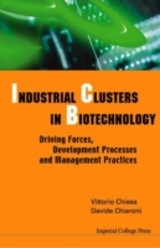Details

Industrial Clusters In Biotechnology: Driving Forces, Development Processes And Management Practices
|
189,00 € |
|
| Verlag: | Imperial College Press |
| Format: | |
| Veröffentl.: | 01.12.2004 |
| ISBN/EAN: | 9781860946073 |
| Sprache: | englisch |
| Anzahl Seiten: | 244 |
DRM-geschütztes eBook, Sie benötigen z.B. Adobe Digital Editions und eine Adobe ID zum Lesen.
Beschreibungen
This book presents the results of Cleverbio, a project funded by the European Commission. The project examined the process of growth and development of clusters in the biotech industry, identifying and studying the main driving forces. The empirical work involved in-depth analysis of five clusters at different stages of development: Cambridge, the most important cluster in Europe; Heidelberg, one of the strongest in Germany; Aarhus in Denmark; Marseille in France; and Milano in Italy at an early stage of development. Other clusters were also analysed, such as Paris-Evry (France), Uppsala (Sweden), Biovalley (Switzerland), Bay Area and San Diego (US).The ultimate aim of Cleverbio has been to build a normative model that incorporates:* the preconditions for a cluster to grow (scientific base and/or industrial base, innovative financing, etc.);* the driving forces for cluster growth and development, i.e. the key factors of development (new company creation, IP rules, acceptance of biotech products, services and infrastructures, etc.);* best practices in cluster management (barrier removal, network creation, marketing, technology transfer, etc.).The book also identifies different forms of cluster creation. In some cases clusters were born and grew spontaneously as a consequence of the original co-presence of the key success factors (spontaneous clusters); in other cases they were born of the actions of public actors (industry restructuring and industry development policies). Finally, in a few cases, the process of clustering started as a result of a combination of different original conditions (hybrid clusters).














